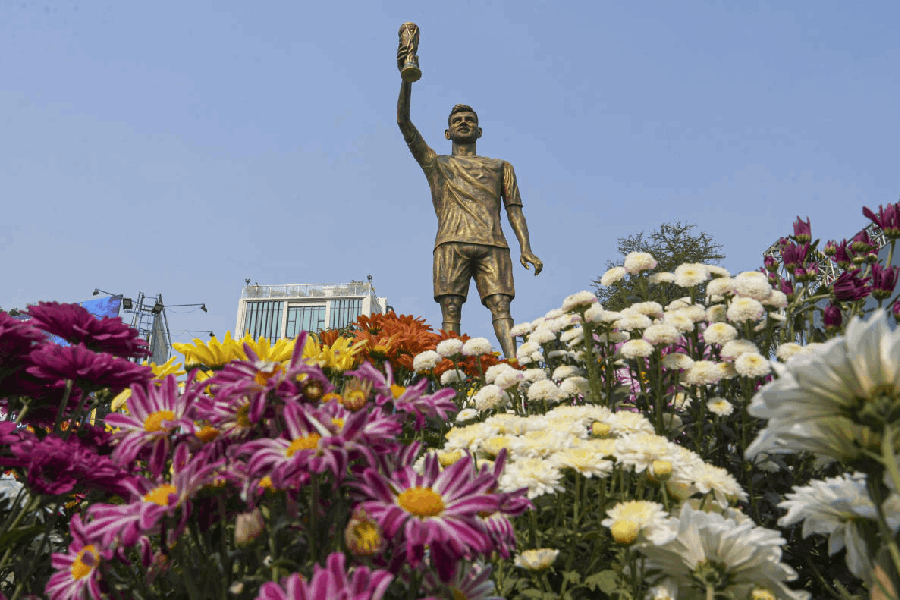Six vultures from a north Bengal park, two of them with satellite transmitters tied around their necks, will be released into the wild on Tuesday.
The movement of the birds will be closely tracked after the release by forest officials and a team of researchers from the Bombay Natural History Society, which is helming the project.
A scientist with BNHS said the project could be a significant step in bringing vultures back from the brink of extinction. Metro gives the low-down:
Alarming decline
India’s vulture population had fallen to a few hundred in 2007 from an estimated 40 million in the early 1980s. Scientists blamed the decline in numbers on diclofenac — a common painkiller administered to cattle.
Vultures get exposed to diclofenac when they feed on carcasses of livestock that were administered the drug. The drug is toxic for vultures. “It leads to kidney failure and a painful death,” a veterinarian in the forest department said.
Three types of vultures were worst hit by the drug — the white-backed vulture, the long-billed vulture and the slender-billed vulture. All three are critically endangered — a step away from extinction.
Fightback
The Centre had in 2006 banned the use of diclofenac on livestock. But multiple-dose vials of the drug available in the market for humans continued to be used in the veterinary sector. In 2015, the government restricted the vial size for humans at 3ml hoping it would not be used in the veterinary sector as the size was too small for cattle. But some veterinarians and quacks continued buying multiple vials of the drug to administer it to cattle, forest officials said.
“We are sensitising para vets and quacks, the go-to option for cattle owners,” Ravi Kant Sinha, chief wildlife warden of Bengal, said.
The BNHS had set up the Rajabhatkhawa centre and similar facilities across the country in collaboration with state forest departments to revive the vulture population. The Rajabhatkhawa centre, set up in 2006, has 130-odd vultures, mostly the three critically endangered varieties. Over one-third of the population is captive-bred.
Cousins to lead
The six vultures that will be released on Tuesday are Himalayan griffons of the same Gyps genus like the white-backed, long-billed and slender-billed vultures but not as endangered.
“Their habitats are more remote and forested and consequently, their exposure to the drug is much less,” Vibhu Prakash, principal scientist with the BNHS who first documented the decline in vulture numbers at a park in Rajasthan, said.
The griffons are being released in the first lot because the authorities don’t want to risk the lives of the critically endangered birds in the first trial.
All six were rescued from the wild as babies and raised at the Vulture Conservation and Breeding Centre in Alipurduar’s Rajabhatkhawa. “If the birds are able to survive in the wild for one year, their endangered cousins will next be released into the wild,” Prakash said.
Stage set
The six birds were released into an aviary four months ago. The aviary is a 400ft-long and 100ft-wide patch in the Buxa forest by the Bala riverbed, with nets in place of boundary walls. The breeding centre is inside the forest.
“From the breeding centre, they were released into the aviary. It is a stop before they are released into the wild. So far, the birds have adjusted well with their new home outside the centre. Wild vultures have also been flying in and spending some time outside the aviary,” Subhankar Sengupta, field director of Buxa Tiger Reserve and member secretary of the Rajabhatkhawa centre’s governing body, said.
On Tuesday, the nets of the aviary will be removed to let the birds move out.
Spreading the word
A conference was held in the Buxa reserve on February 22 and 23. Apart from forest officials from Bengal and neighbouring states, drug controllers from the health ministry and representatives of the Medical Council of India and the state animal husbandry department attended the conference.
The conference was meant to spread awareness about the perils of using diclofenac. “Chemists have to be dissuaded from selling multiple vials of the drug without prescription,” chief wildlife warden Sinha said.
The immediate periphery of the centre has been declared a priority zone. Special drives have been undertaken at local markets and neighbourhoods to discourage the use of diclofenac.










